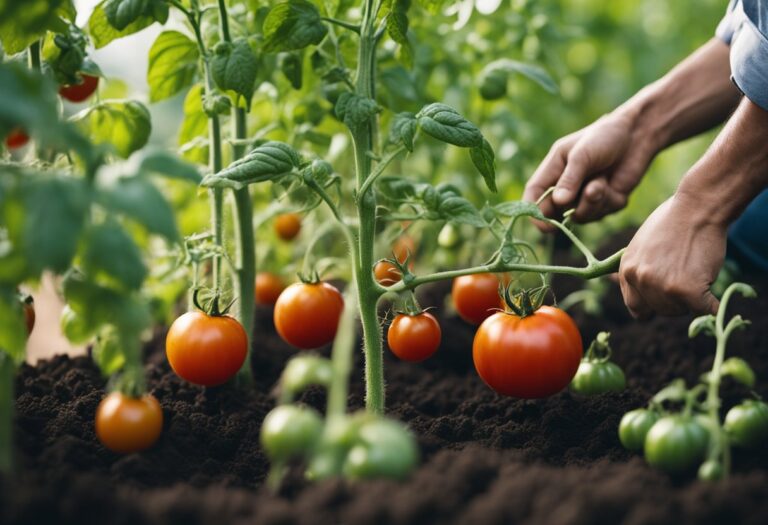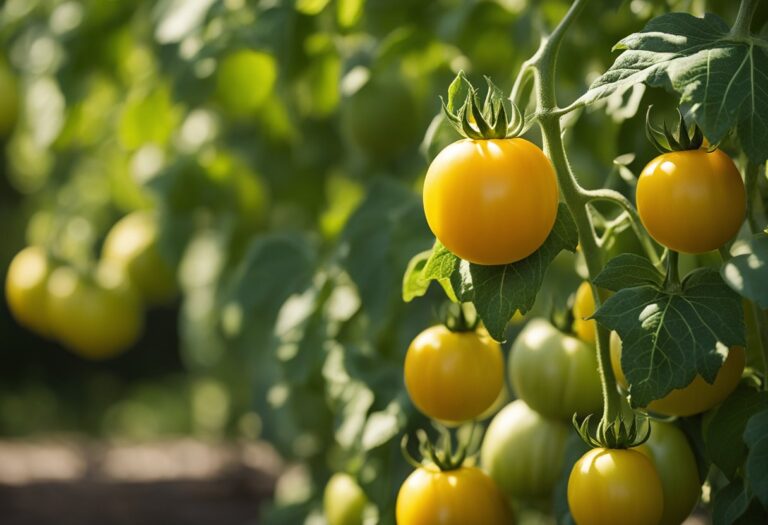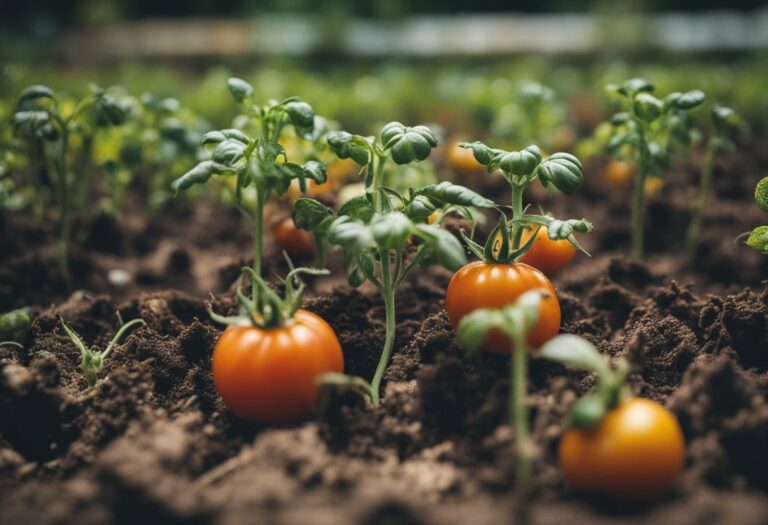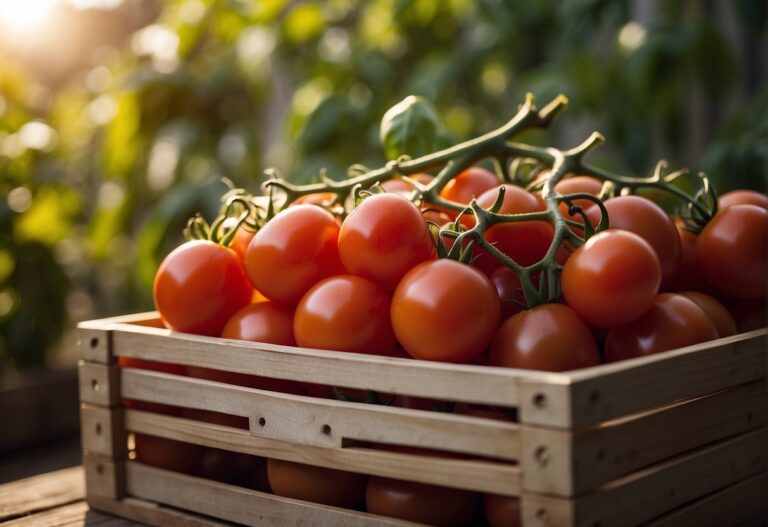Cat Faced Tomato: A Unique and Adorable Addition to Your Garden
If you’re an avid gardener or tomato enthusiast, you may have come across the term “cat faced tomato.” While it may sound like a strange and unappetizing name for a tomato, cat facing is actually a common and harmless condition that affects the appearance of some tomato fruits. In this article, we’ll explore what cat faced tomatoes are, how they grow, and how they can be used in the kitchen.

Cat facing is a physiological disorder that causes deep indents, scars, and puckers on the surface of a tomato fruit. These deformities can make the tomato look like it has a small cat’s face, hence the name “cat faced tomato.” While cat facing can affect the appearance of a tomato, it doesn’t usually impact the taste or quality of the fruit. In fact, some gardeners even consider cat faced tomatoes to be a unique and desirable addition to their gardens.
If you’re interested in growing cat faced tomatoes yourself, there are a few things you should keep in mind. Cat facing is often caused by environmental factors such as fluctuating temperatures and moisture levels, so it’s important to provide your tomato plants with consistent and appropriate growing conditions. Additionally, cat faced tomatoes can be used in a variety of culinary applications, from sauces and salsas to sandwiches and salads. So don’t let their unusual appearance scare you away – cat faced tomatoes can be a fun and flavorful addition to your garden and your kitchen.
Key Takeaways
- Cat facing is a common and harmless condition that affects the appearance of some tomato fruits.
- Consistent and appropriate growing conditions can help prevent cat facing in tomato plants.
- Cat faced tomatoes can be used in a variety of culinary applications.
What Is a Cat Faced Tomato?

If you’ve ever grown tomatoes, you may have come across a cat faced tomato. These tomatoes are characterized by deep indents, rough scars, puckers, uneven ripening, and sometimes delineated segments. In this section, we’ll explore the characteristics and causes of cat facing in tomatoes.
Characteristics of Cat Faced Tomatoes
Cat facing is a physiological disorder that affects the appearance of tomatoes. The abnormal cracking and dimpling on the fruit looks somewhat akin to a small cat’s face, hence the name. The deformity can vary in severity, from slight indentations to deep crevices that make the fruit unsightly.
Cat facing usually affects the blossom end of the tomato, where the flower was once attached. The deformity can affect one or more tomatoes on a plant, and it’s more common in larger tomatoes, such as beefsteak varieties.
Causes of Cat Facing
The reasons behind cat facing still remain a bit of a mystery. However, some factors are known to contribute to this disorder. One of the primary causes is temperature fluctuations during the growing season. When the temperature drops below 50°F or rises above 90°F, it can cause the fruit to develop abnormally.
In addition to temperature fluctuations, other environmental factors can contribute to cat facing. These include poor soil conditions, irregular watering, and exposure to certain chemicals. Genetic factors may also play a role in the development of cat facing.
Overall, cat facing is a common disorder that affects many tomato plants. While it may make the fruit unsightly, it doesn’t affect the taste or quality of the tomato. By understanding the causes and characteristics of cat facing, you can take steps to prevent it from occurring in your tomato plants.
Growing Cat Faced Tomatoes

If you want to grow cat faced tomatoes, there are a few things you need to keep in mind. First, you need to create the ideal conditions for growth. Second, you need to take steps to prevent cat facing.
Ideal Conditions for Growth
Cat faced tomatoes grow best in warm weather. They need plenty of sunlight and well-draining soil. You can start the seeds indoors about six weeks before the last frost date in your area. Once the seedlings have sprouted, you can transplant them into the garden or a container.
When planting the seedlings, make sure to space them about 2-3 feet apart. This will give them enough room to grow and produce fruit. You can also add a layer of mulch around the plants to help retain moisture in the soil.
Prevention of Cat Facing
Cat facing is a common problem with tomatoes, but there are steps you can take to prevent it. One way to prevent cat facing is to choose the right variety of tomato. Some varieties are more prone to cat facing than others. Look for varieties that are resistant to cat facing.
Another way to prevent cat facing is to make sure the plants are getting enough water and nutrients. Tomatoes need regular watering and fertilization to grow properly. You can also use a foliar spray to help prevent cat facing.
In summary, growing cat faced tomatoes requires creating the ideal conditions for growth and taking steps to prevent cat facing. By following these tips, you can enjoy a bountiful harvest of cat faced tomatoes.
Culinary Uses
Cooking with Cat Faced Tomatoes
Cat faced tomatoes may not be the most visually appealing, but they can still be used in a variety of culinary applications. When cooking with cat faced tomatoes, it is important to note that they may have a slightly different texture and flavor than regular tomatoes. However, this can actually be a benefit in some dishes, as it can add a unique touch to your recipe.
One popular way to use cat faced tomatoes is in sauces. The irregular shape and texture of the tomatoes can help to create a chunky, rustic sauce that is perfect for pasta dishes. You can also use cat faced tomatoes in soups and stews, where their flavor and texture can add depth to the dish.
Recipe Ideas
If you’re looking for some recipe ideas for cat faced tomatoes, there are plenty of options to choose from. Here are a few ideas to get you started:
- Tomato and Basil Bruschetta: Toast some bread and top it with a mixture of chopped cat faced tomatoes, fresh basil, garlic, and olive oil for a delicious and easy appetizer.
- Cat Faced Tomato Salad: Combine sliced cat faced tomatoes with fresh mozzarella, basil, and a drizzle of balsamic vinegar for a simple and tasty salad.
- Rustic Tomato Sauce: Use cat faced tomatoes to make a chunky, rustic tomato sauce that is perfect for pasta dishes. Simply sauté some garlic and onions in olive oil, add the chopped tomatoes, and simmer until the sauce has thickened.
These are just a few ideas to get you started, but there are plenty of other ways to use cat faced tomatoes in your cooking. Don’t be afraid to experiment and try new things!
Garden Aesthetics
Incorporating Cat Faced Tomatoes in Garden Design
If you are growing cat faced tomatoes in your garden, you may be wondering how to incorporate them into your garden design. Despite their unusual appearance, cat faced tomatoes can add a unique and interesting element to your garden.
One way to incorporate cat faced tomatoes into your garden design is to plant them in a separate section of your garden. This can create a focal point and draw attention to the unusual shapes and textures of the tomatoes. You can even mix different varieties of cat faced tomatoes to create a colorful and eclectic display.
Another way to incorporate cat faced tomatoes into your garden design is to use them in container gardening. This is a great option if you have limited space or want to add some interest to your patio or balcony. You can mix different varieties of cat faced tomatoes in a single container or create a display of multiple containers with different varieties.
If you want to showcase the unique shapes and textures of cat faced tomatoes, consider using them in a raised bed garden. This can create a dramatic and eye-catching display, especially if you mix different varieties of cat faced tomatoes with other vegetables and herbs.
Overall, incorporating cat faced tomatoes into your garden design can add a fun and quirky element to your outdoor space. Whether you choose to plant them in a separate section of your garden, use them in container gardening, or showcase them in a raised bed garden, cat faced tomatoes are sure to make a statement.
Health and Nutrition
Nutritional Profile of Cat Faced Tomatoes
Cat faced tomatoes are not only unique in appearance, but they also have a different nutritional profile compared to regular tomatoes. Here is a breakdown of the nutrients found in cat faced tomatoes:
| Nutrient | Amount per 100g |
|---|---|
| Calories | 18 |
| Carbohydrates | 3.9g |
| Protein | 0.9g |
| Fat | 0.2g |
| Fiber | 1.2g |
| Vitamin C | 13.7mg |
| Vitamin A | 42µg |
| Potassium | 237mg |
| Calcium | 10mg |
| Iron | 0.3mg |
As you can see, cat faced tomatoes are low in calories and fat, making them a great addition to any diet. They are also a good source of fiber, which can help promote healthy digestion. Additionally, they contain vitamins and minerals such as vitamin C, vitamin A, potassium, and iron.
One thing to note is that cat faced tomatoes may have a slightly different taste compared to regular tomatoes. Some people describe them as being sweeter or having a more complex flavor. This is due to the fact that the cat facing deformity can cause the tomato to develop unevenly, resulting in a unique taste.
Overall, cat faced tomatoes are a healthy and tasty addition to any meal. Whether you add them to a salad or use them in a recipe, you can feel good about the nutritional benefits they provide.
Frequently Asked Questions
What are the symptoms of catfacing in tomatoes?
Catfacing in tomatoes can cause the fruit to have deep indents, rough scars, puckers, and sometimes even segmented parts. The fruit may also ripen unevenly. If you notice these symptoms in your tomatoes, it is likely that they have catfacing.
Is it safe to eat tomatoes with catfacing?
Yes, it is safe to eat tomatoes with catfacing. Although the appearance may be unappealing, the fruit is still edible and nutritious.
How can you prevent catfacing in tomatoes?
There are several ways to prevent catfacing in tomatoes. One way is to maintain consistent temperatures during the growing season. Tomatoes are sensitive to temperature changes, so it is important to keep them in a stable environment. Another way is to choose tomato varieties that are less prone to catfacing. Additionally, keeping tomato plants healthy by watering, mulching, and staking them can help prevent catfacing.
What is the difference between sunscald and catfacing in tomatoes?
Sunscald and catfacing are two different conditions that can affect tomatoes. Sunscald occurs when the fruit is exposed to too much direct sunlight, causing it to become discolored and dry. Catfacing, on the other hand, occurs when the tomato blossom is damaged, resulting in malformed fruit with deep indents and scars.
Can catfacing in tomatoes affect their taste?
Catfacing in tomatoes does not affect their taste. However, it can affect the appearance of the fruit, making it less desirable.
Should tomatoes with catfacing be removed from the plant?
It is not necessary to remove tomatoes with catfacing from the plant. The fruit is still edible and can be used in recipes. However, if you prefer to have uniform-looking tomatoes, you may choose to remove the affected fruit.




